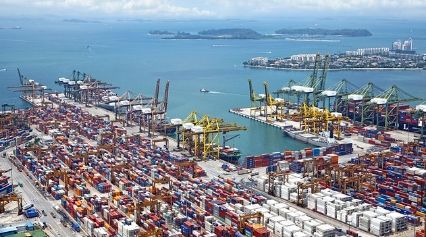What is the Export Declaration Form?
What is the Export Declaration Form?
The Export Declaration Form, often abbreviated as EDF, is a crucial document required by customs authorities for the export of goods from one country to another. This form serves as a declaration by the exporter, providing essential details about the exported goods, their value, destination, and other pertinent information. Essentially, the Export Declaration Form facilitates the tracking and monitoring of goods leaving a country's borders, ensuring compliance with trade regulations and taxation policies.

The information provided in the Export Declaration Form typically includes details such as the exporter's name and address, the consignee's details, a description of the goods being exported, their quantity, value, and the mode of transportation. Additionally, it may also include information regarding any applicable licenses or permits required for the export of specific goods.
What is the export declaration process?
The export declaration process involves several steps, beginning with the completion and submission of the Export Declaration Form. Here's a breakdown of the typical export declaration process:
a. Preparation: The exporter gathers all necessary documentation and information required for completing the Export Declaration Form. This may include commercial invoices, packing lists, permits, licenses, and any other relevant documents.
b. Completion of Export Declaration Form: The exporter fills out the Export Declaration Form accurately and comprehensively, ensuring that all required information is provided. Any discrepancies or inaccuracies in the form could lead to delays or even penalties.
c. Submission to Customs: Once the Export Declaration Form is completed, it is submitted to the relevant customs authorities electronically or in physical form, depending on the requirements of the exporting country.
d. Customs Processing: Customs authorities review the Export Declaration Form to verify the accuracy of the information provided and to ensure compliance with export regulations. They may conduct additional checks or inspections if deemed necessary.
e. Approval and Clearance: Upon satisfactory review of the Export Declaration Form and associated documentation, customs authorities grant approval for the export of the goods. The goods are then cleared for shipment and can proceed to be loaded onto the chosen mode of transportation.
f. Record Keeping: Both the exporter and customs authorities maintain records of the Export Declaration Form and associated documents for a specified period, as required by regulations. These records serve as a reference for future audits or inquiries.
- Export Declaration Form Considerations
While completing the Export Declaration Form, exporters should pay attention to several key considerations to ensure compliance and facilitate smooth export processes:
a. Accuracy: It is essential to provide accurate and detailed information in the Export Declaration Form to avoid delays, penalties, or potential legal repercussions. Double-check all details, including product descriptions, quantities, and values, before submission.
b. Regulatory Compliance: Ensure that the export of goods complies with all relevant export regulations, including licensing requirements, trade restrictions, and sanctions. Failure to comply with regulatory requirements could result in fines or other consequences.
c. Timeliness: Submit the Export Declaration Form within the specified timeframe as required by customs authorities. Delays in submission could lead to shipment delays or missed deadlines, affecting both the exporter and the importer.
d. Documentation: Keep thorough records of all documentation associated with the export transaction, including the Export Declaration Form, commercial invoices, packing lists, and any permits or licenses. These documents may be required for customs clearance and serve as proof of compliance.
e. Communication: Maintain open communication channels with customs authorities and other relevant parties throughout the export process. Address any inquiries or requests for additional information promptly to avoid delays or complications.
In conclusion, the Export Declaration Form plays a critical role in international trade, facilitating the smooth flow of goods across borders while ensuring compliance with regulatory requirements. By understanding the purpose of the Export Declaration Form and adhering to best practices during the export declaration process, exporters can minimize risks and streamline their export operations.
Related articles

 WeChat of CBiBank
WeChat of CBiBank